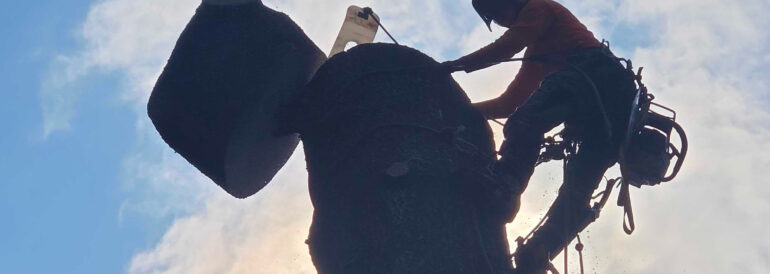Why Timing Matters for Tree Trimming
The season you choose for pruning makes a big difference in tree health. Studies show that trees cut during late winter dormancy close wounds about 85% than cuts made during the growing season.
They also face 40% less stress and a lower risk of attracting pests or diseases. The cuts close in late winter before spring growth begins and this allows the stored energy reserves to power vigorous recovery. Since most insects are not active in cold weather and most pathogens are inactive below 50°F, pruning in cold seasons of the year has the least chance of infection. Planting on time enables quick healing of wounds, and trees to be ready to thrive in the spring.
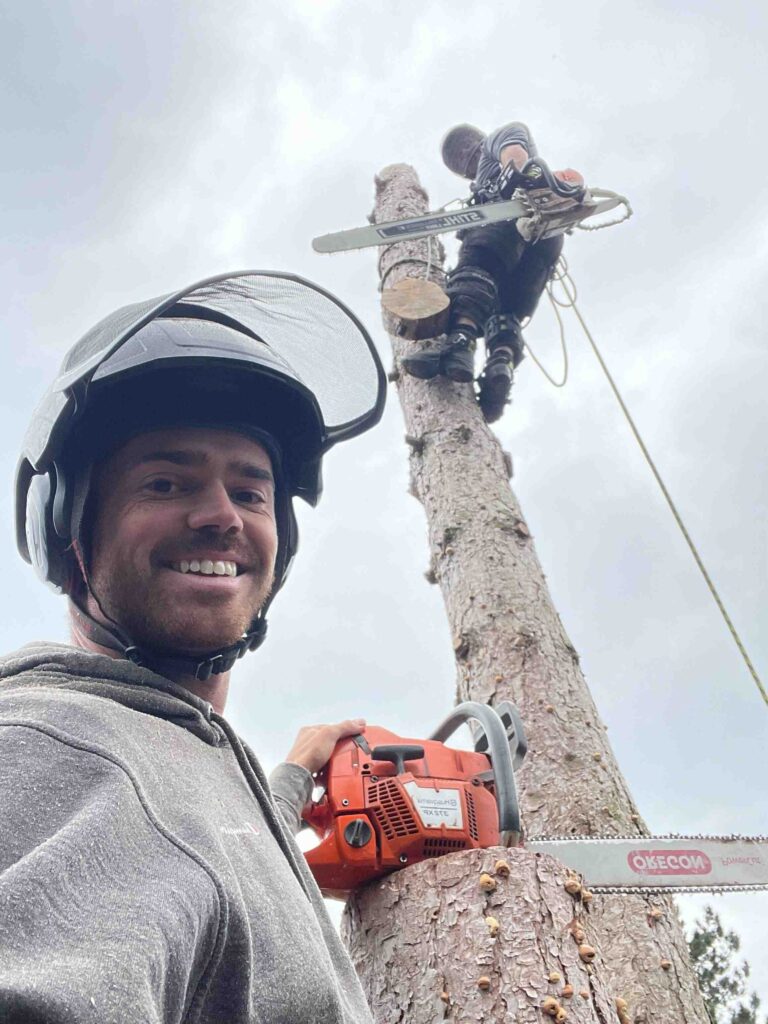
Winter pruning action-removal of a dead branch in the dormant period of the tree to ensure healthy growth in the spring.
The trees are living organisms wherein their systems are complex which react differently based on the season. In dormancy, energy is stored in roots and stems and not in leaves; the implication is that the use of cuts taken during dormancy will use stored carbohydrates to heal more quickly.
During the spring when the weather becomes warmer, sap starts to flow more actively. The cutting at this stage may cause the sap to bleed excessively in some species, like maples and birches, which slows the sealing process, providing an opening to pathogens.
Studies of various university extension departments reveal that pruning at the time of active growth removes the resources used in photosynthesis and fruiting but cuts made during dormancy do not drain the energy stores used to restore them.
Best Time to Trim Trees in Winter – The Gold Standard
Late winter pruning from February to early March gives the best results for most deciduous trees, particularly in the Pacific Northwest where this window avoids both extreme cold snaps and the onset of rapid spring growth.
In this season the trees can heal well, structural defects are evident since the branches are bare and stress is also reduced since energy is not being channeled to hold the leaves.
The cold during cold weather keeps fungi and bacteria dormant, the insects in their inactive stage and therefore the chances of cuts attracting pests or infecting people are less likely.
Frozen turf goes to an extent of making it simpler to transport machinery without breaking the grass. The best window is late February through early March when temperatures remain above 20°F, while cuts during extreme cold below 10°F should be avoided.
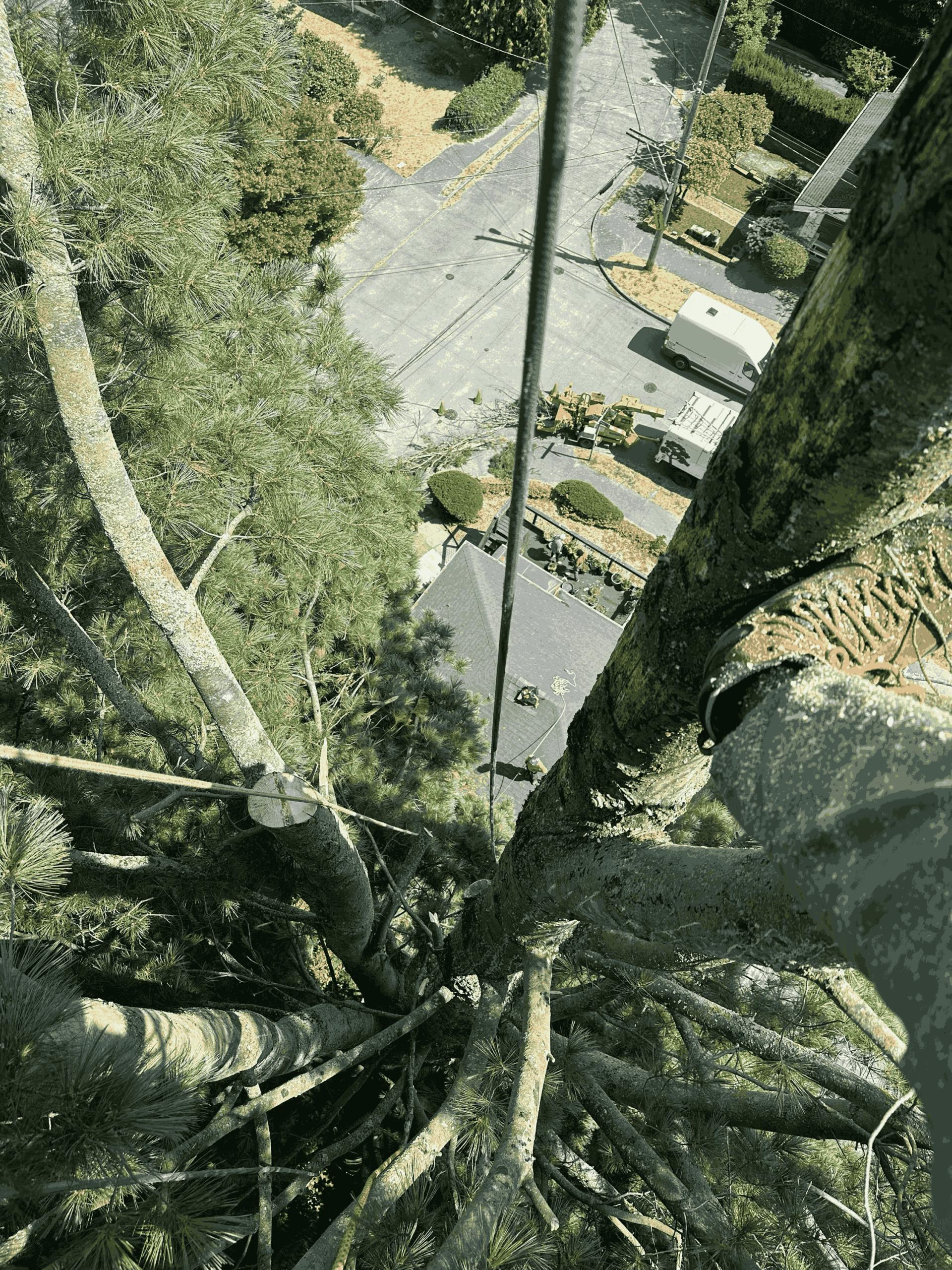
During winter when high trees are being trimmed a bloomatree arborist works safely on high trees with the help of ropes and harnesses to do this job more accurately and safely above the snowy ground.
The climate in the sea makes the winters in Seattle pretty mild compared to other areas in the north.
Average temperatures do not drop below 30°F, so late February and early March are always safe in terms of healing any wound without the danger of excessive frost damage.
Research at the Washington State University Extension points out that pruning during this period of the year also limits the spreading of the fungal spores which are highly active with spring rains. For homeowners, this means winter provides the rare opportunity to balance optimal tree health with practical concerns like ground stability and safe access for equipment.
Winter Pruning Exceptions – Trees to Avoid
Not every species should be pruned in winter. Oak trees should never be pruned between April and October because this increases the risk of oak wilt disease.
Elm trees should only be cut when leafless to prevent Dutch elm disease. Stone fruit trees such as cherries and plums are safer to prune in summer to avoid bacterial canker. Trees that bleed sap such as maple, birch, and walnut are also better pruned in summer.
Summer Tree Trimming – Strategic Seasonal Approaches
Pruning in summer is particularly useful for controlling growth and improving fruit production, and it is especially effective in Seattle where summers are mild but still provide the energy reduction that pruning requires.
Research shows that summer pruning achieves up to 60% better control of growth than winter pruning and reduces water sprout production by as much as 70%. It also enables the light and air to penetrate fruit trees and gives a chance to eliminate branches infested by pests during the active season.
The most opportune moment is early summer when it is between June and July, before the heat of summer. Although Seattle is not subject to a long heat wave, pruning must be avoided in days that are over 90°F. The amount of cuts should be moderate with a limit of up to a quarter of the canopy.
Fruit trees are best pruned after the fruit is set but before harvest. The stresses include drought, reduced healing rate, increased attraction of pests and scalding of bark that has been exposed to the sun for a short time.

Citrus tree pruning stages in a Mediterranean climate: (a) immediately after pruning, (b) regrowth of new foliage, and (c) full canopy restoration.
Summer pruning is particularly useful with fruit trees, particularly in the Pacific Northwest. Stone fruits, pears, and apples may have thick canopies that trap moisture, thus promoting fungal infections like apple scab and powdery mildew.
Early summer thinning enhances airflow and penetration of sunlight which reduces the pressure of the disease and improves the quality of fruit. Another factor is pest control. Insects such as aphids and caterpillars are most active during the growing season.
Removing infested shoots before populations spread is an effective non-chemical management tool. In Seattle’s climate, where summers are drier but rarely extreme, carefully timed pruning can significantly improve both tree resilience and fruit yield.
When is the Best Time of Year to Trim Trees and Bushes
Deciduous Trees Timing
Deciduous trees: The most ideal is at the end of winter, February to March. Early summer can also be used in case the objective is to downsize. Fall pruning is not encouraged as it usually encourages tender growth which is vulnerable to frost. In case of emergency, any time can make emergency cuts provided it is safe.
Evergreen Trees Schedule
Evergreen trees: These are best pruned in late winter before spring growth. Light pruning in summer is also fine, but late fall should be avoided in colder regions. Pines are a special case and should only be pruned in early summer.
Flowering Shrubs Calendar
Flowering shrubs: Timing depends on the bloom cycle. Spring bloomers should be trimmed immediately after flowering ends. Summer bloomers are pruned in late winter or early spring. Fall bloomers are pruned in early spring, before new growth begins.
The pruning schedules are closely linked with the occurrence of the bloom cycles since the buds develop at various times of the year. The process of cutting a spring-flowering shrub in the winter (like a lilac or rhododendron) removes the buds that would otherwise have opened the following spring.
The fact that the plant waited until just after flowering means that the stored energy is already used in flowering, and pruning promotes the development of new shoots which will form buds next year. Summer-flowering shrubs, by comparison, bud on new growth and therefore late-winter or early-spring pruning induces healthy shoots and maximizes flower production. Early spring cuts are best on fall bloomers as they remove deadwood prior to the surfacing growth. The latter cycles in particular are rather significant in gardens in Seattle, where long rainy springs may cut the longevity of a particular bloom cycle when the shrubs are trimmed improperly.
Can Trimming Help Control Plant Size?
Timely pruning will help make trees the correct size to ensure their safety and manageability, as well as guarding overall health. It has been found that summer pruning lowers tree vigour (by up to 60 to 80%) compared to winter cuts, the most effective method of long-term size control.
When pruned in the growing season, the removal of leaves restricts the ability of the tree to make energy, slowing down growth in a manner that is impossible to accomplish using winter pruning. Arborists discourage a heading cut over thinning, as thinning has a more natural look and does not encourage aggressive regrowth.
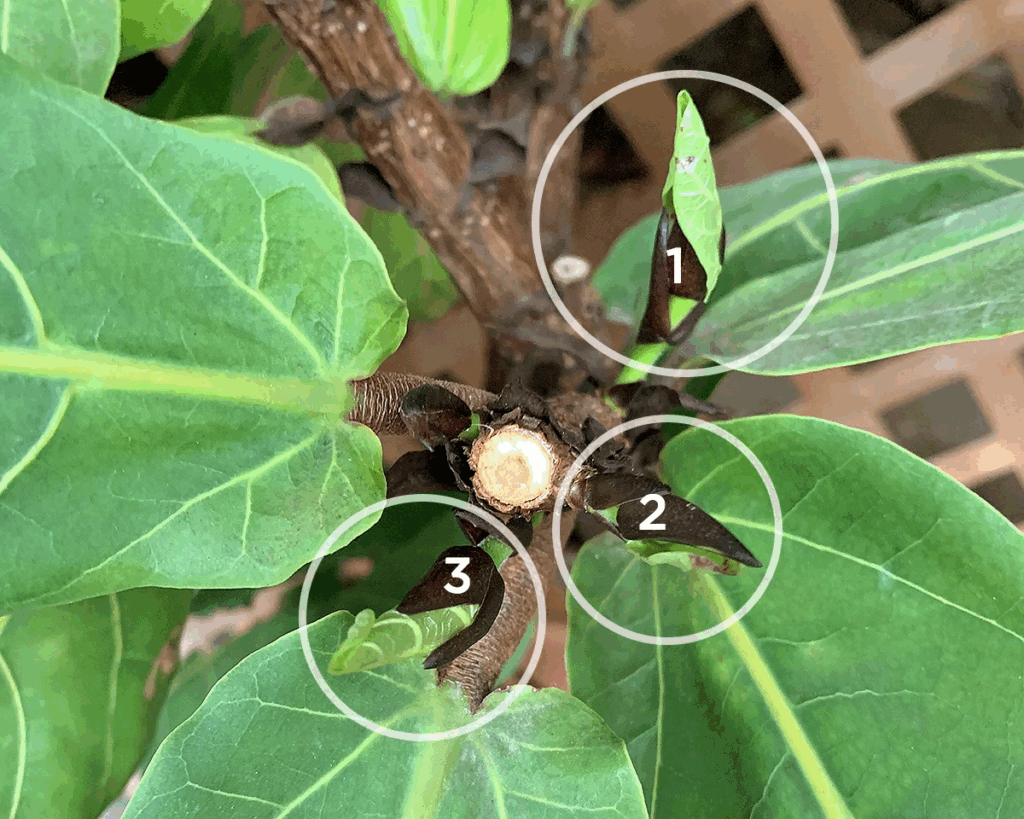
New growth points that occur following pruning demonstrate that healthy cuts that are made in the correct manner will result in numerous healthy shoots that can be used to shape the plant.
A gradual reduction spread across several seasons helps prevent shock and allows the tree to adapt to its smaller size. Certified professionals apply precise techniques that avoid water sprouts and prevent the damage caused by topping.
Long-term size control is most effective when started early in a tree’s life, guiding its mature form through careful reduction cuts. Proper planning and pruning strategies ensure that trees remain healthy and structurally sound even when growth is intentionally reduced.
Tree Species-Specific Timing Guidelines
Certain species need very specific timing. Oaks should only be pruned from December to February to prevent oak wilt.
Elms should only be pruned between October and April when leafless to avoid Dutch elm disease.
Apple and pear trees are best pruned in late winter to prevent fire blight. Honey locust should be pruned in winter dormancy to avoid canker.
Trees such as maple, birch, and walnut are safer to prune in summer to avoid heavy sap flow. Pines should be pruned in early summer when candles appear, while spruce and fir respond best to late winter pruning. Arborvitae and juniper tolerate light pruning at almost any time through mid-summer.
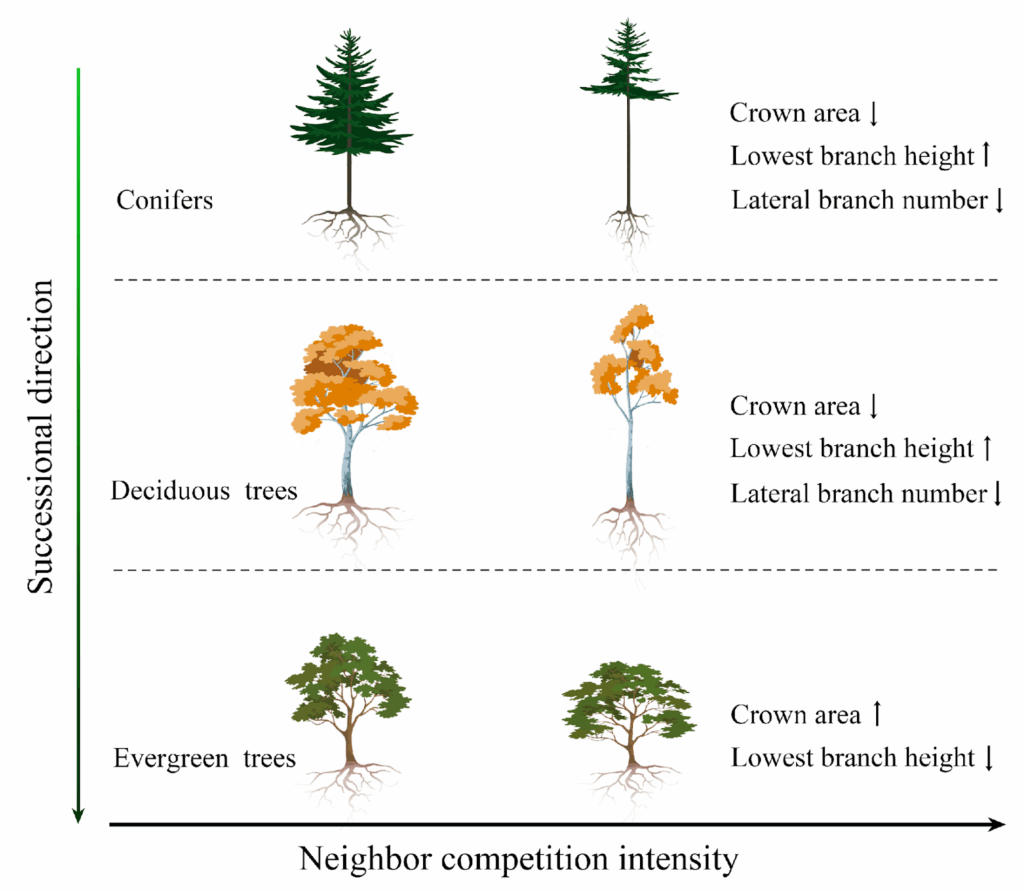
Competitive patterns in tree growth: increasing the neighbor density decreases the area of the crown, increases the lowest height of the branch, and decreases lateral branching in conifers, deciduous and evergreen trees.
Oak wilt, which is a devastating fungus, spreads very fast and is due to wounds in the growing season.
The spores are transported by insects between trees, and that is why the only time when pruning oaks can be done safely is in winter when the fungi and insects are dormant.
The Dutch elm disease is transmitted similarly by using the elm beetle that feeds most in the warmer months. The apple and pear trees are susceptible to fire blight, which is a bacterial disease, that prefers a humid spring. It is very much safer to prune these species in late winter when temperatures are below 50 degrees and the chances of rain are considerable, to minimize the chances of being infected.
Maples, birches, and walnuts are called “bleeders” since they are producers of a lot of sap during the beginning of spring. Cuts will close improperly and the sticky sap will attract insects if pruned at that time.
It is better to wait until summer so that these species have time to regain their strength without enduring sap flow. Long rainy springs and warm summers increase these diseases and chances of bleeding, which places timing concerns with even greater significance in the Pacific Northwest.
Signs Your Trees Need Immediate Trimming
Seasonal timing is important, but some situations require pruning right away regardless of the calendar. Research shows hazardous branches increase storm-related property damage risk by up to 75%, a serious concern in the Pacific Northwest where winter windstorms are frequent.
Diseased limbs can spread infections across an entire canopy within a single growing season if left untreated. Immediate attention is required for branches hanging over walkways, power lines, or structures, as well as storm damage that leaves wood split or dangling.
Trees showing visible decay, fungal cankers, or heavy pest activity also demand action before problems worsen. Dead branches, crossing limbs that injure one another, and water sprouts that reveal stress all weaken the tree’s structure.
In overcrowded canopies, poor air circulation promotes disease. In Seattle, heavy rain and storms make these risks more urgent, and homeowners should not hesitate to act quickly. When large branches are involved, or when disease and pests are difficult to identify, it is safest to call a professional.
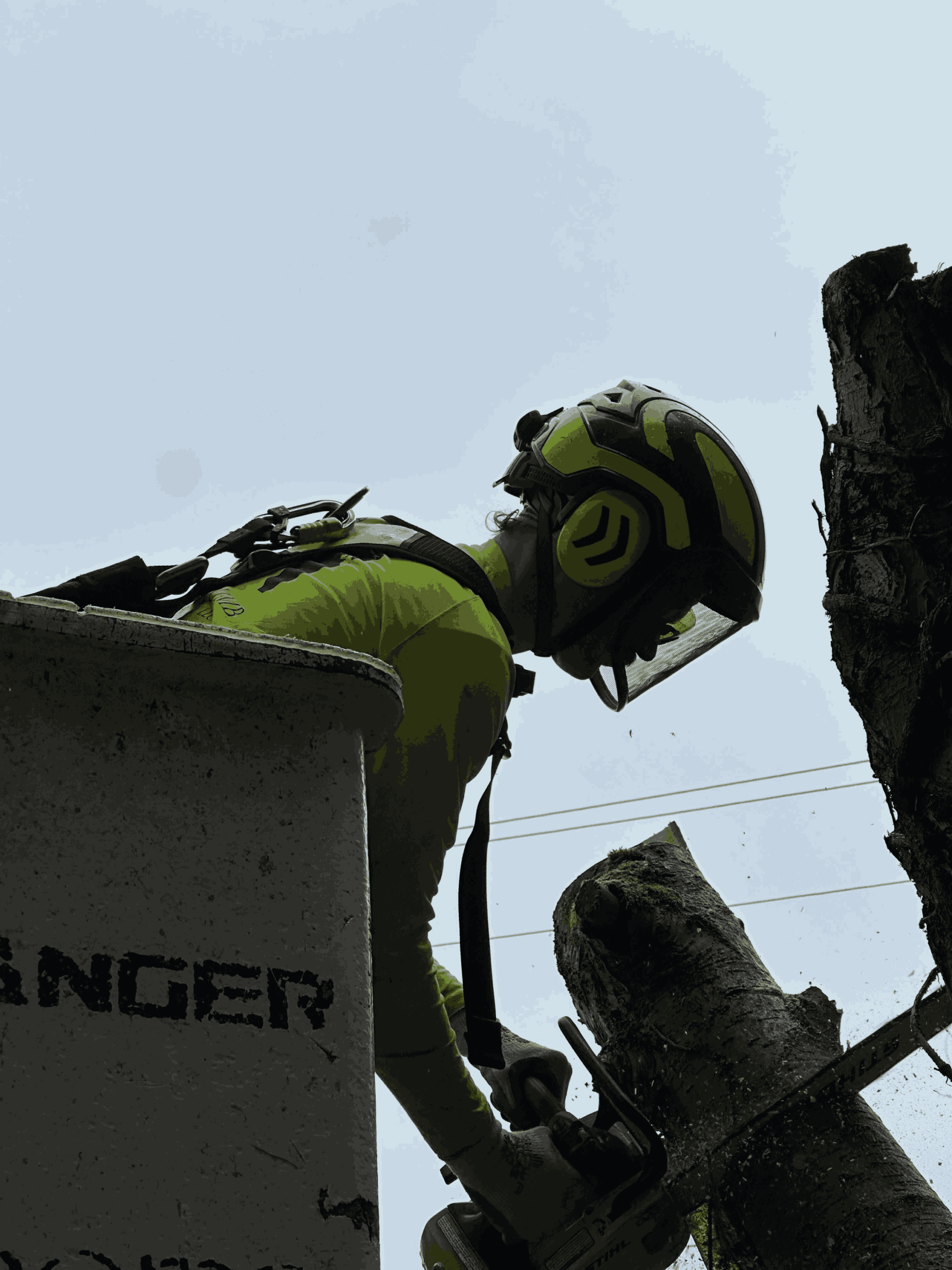
Bloomatree arborist removes a damaged branch to prevent hazards, a key step when trees show signs of structural weakness or storm damage.
Seattle’s winter storms often combine heavy rainfall with high winds, conditions that put extra strain on already weakened branches.
A Washington Department of Natural Resources report noted that storm damage to urban trees in the Puget Sound region increased property damage claims by more than 30% over the past decade.
Homeowners should not assume that waiting for the “right season” is always safe. When a tree poses a threat to people or property, immediate trimming becomes not just a matter of maintenance but of public safety.
Professional vs DIY Timing Considerations
Homeowners often handle light seasonal pruning, but large or valuable trees benefit most from the expertise of certified arborists. Professionals follow both ISA best practices and ANSI A300 pruning standards, which are recognized as the industry benchmark for safe and effective pruning.
Their training allows them to identify the exact windows that minimize stress and reduce disease risk, and studies show professional pruning improves outcomes by as much as 90% compared with do-it-yourself attempts.
DIY efforts are suitable for removing small deadwood, addressing light seasonal maintenance, or managing immediate hazards. For complex cases such as urban trees near structures or utilities, fruit trees requiring production optimization, or species prone to timing-sensitive diseases, professional intervention is the safer choice. In Seattle, local arborists also bring the advantage of regional knowledge, ensuring that tree care aligns with the unique climate and growing conditions of the Pacific Northwest. Find certified tree care experts in Seattle.
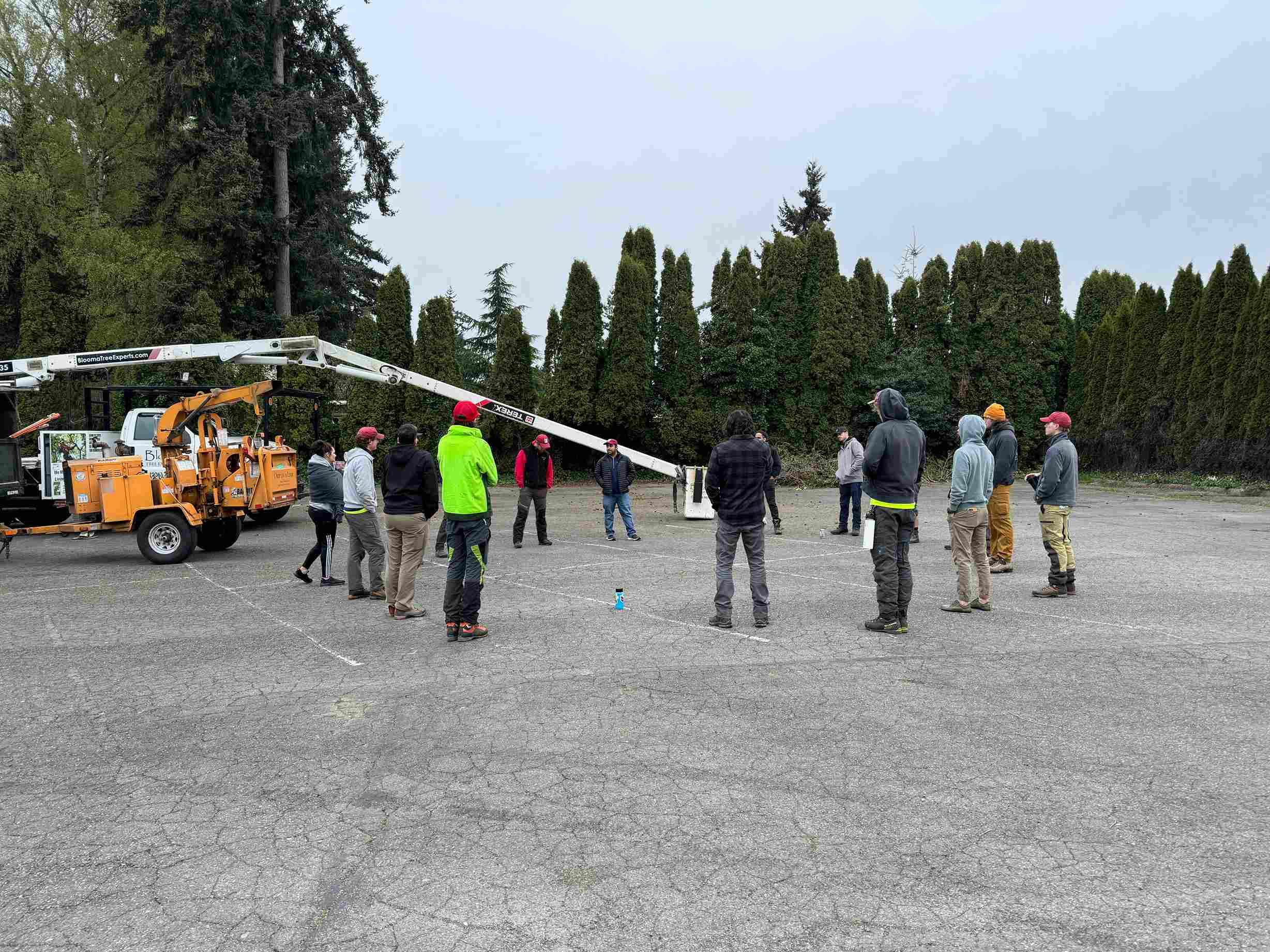
Bloomatree professional arborist team prepares pruning equipment, ensuring safety and precision before tree trimming operations begin.
Professional arborists in Seattle bring not only knowledge of species-specific pruning windows but also regional experience with common local diseases such as anthracnose on sycamores or cedar rusts on junipers. They are trained in the use of specialized equipment that allows for precise cuts high in the canopy and safe work around power lines, a common concern in densely planted neighborhoods. Homeowners attempting these tasks without training risk damaging the tree or injuring themselves. The combination of ISA certification and ANSI A300 compliance ensures that professional pruning practices meet the highest standards of safety and effectiveness.

